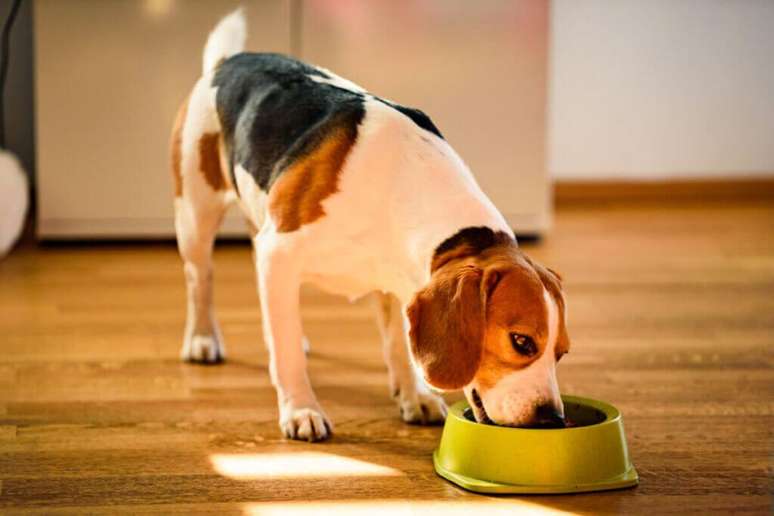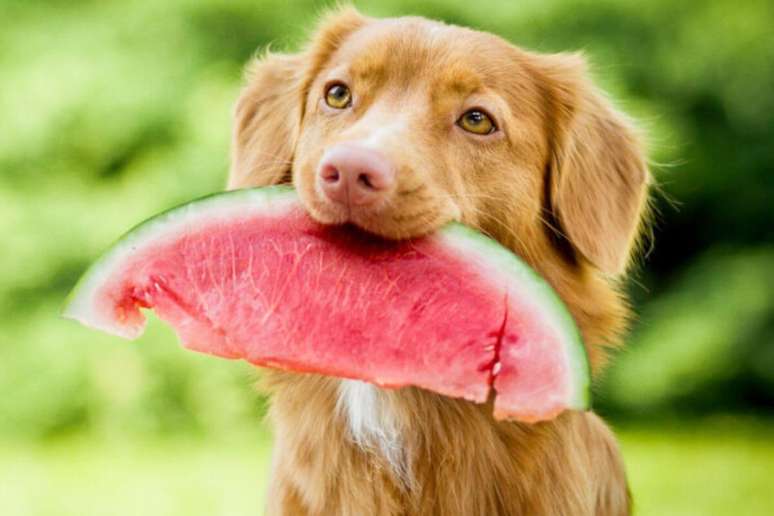This type of food is more beneficial for the animal’s health and can be prepared at home.
Natural dog food, although not new, is strange to many people. Even with the benefits, questions arise about how to prepare the food, which ones can be used and the appropriate measurement. But one thing is certain: the flavor and texture are usually pleasing pets.
This food is individually prepared and adapted to the nutritional needs, clinical and physical state of each animal. It can be offered to all types of dogs: young, adult, elderly, neutered and non-neutered.
“This diet offers greater palatability, fewer preservatives, firmer and odorless stools, general gastrointestinal protection, increased immunity, prevention of diseases and promotion of healthy coat and skin,” explains veterinarian Aluizio Nunes dos Santos.
Differences between feed and natural food
Natural food is often more attractive for animals as it has a more pleasant texture and flavour. Additionally, some dogs may be allergic to animal proteins, in which case they may adhere to a diet rich in plant proteins.
But, according to the veterinarian, the great advantage of the feed is its practicality, since it does not require preparation. “The disadvantage is that it is prepared according to a ‘fixed’ formula, following an organizational chart. Therapeutic feeds treat only one type of disease, since they have a ready-made formula,” he explains.
Again according to Aluizio Santos, since only one type of disease is treated, the use of therapeutic feed can aggravate other symptoms. “While the advantage of natural food is that it is enriched with variable levels of nutrients and suitable for dogs that suffer from more than one disease, for example allergies and urinary stones,” he analyzes.
Benefits of natural food
The vet explains that the composition of the food is balanced and prepared mathematically. “Most are made up of a higher percentage of carbohydrates, called ethereal extract. Some feeds have transgenic corn and soy as raw materials, offal and other processed parts not suitable for human consumption, as well as preservatives, which can be carcinogenic. Being a dry food, contains only 10% water.”
Natural foods, in turn, have a lower percentage of ethereal extract and the amount of water present ranges from 60 to 80% in total. “The big difference between a natural diet and a feed is that you try to adapt the food to improve digestion pets. Masticatory physiology shows us this, since the teeth of pets They are suitable for tearing food and not crushing it, as happens with feed”, underlines Aluizio Santos.
Better hydration and protection against obesity
The natural diet can provide 7 times more water content than conventional diets, which helps preserve the animal’s renal system. Therefore it is not necessary to drink large quantities of liquids.
“The glycemic load is lower, since the preparation of the natural diet does not include the presence of high levels of carbohydrates present in conventional feeds, which have cereals as raw materials. This is advantageous for obesity control“, analyzes the teacher.

Consult a vet first change the power supply
As a general rule, any breed can follow a natural diet, but the ideal is to consult a vet to check if your dog has any restrictions or intolerances. “An example could be animals that have an intolerance to carbohydrates or pre-existing diseases, in which carbohydrates are limited, such as in diabetes, and proteins, in case of renal failure”, explains Aluizio Santos.
Assemble the dish
The most recommended foods are fruit and vegetables. The professional explains what the composition of a balanced meal should be: “The proportion must be carefully calculated, including natural integration. The diet is prepared with 30% boneless meat (protein), 30% vegetables and 35 % carbohydrates (macronutrients)”.
According to him, even food can be integrated with good quality vegetable oil, such as olive oil, coconut oil or flaxseed oil. “You can have brown salt and fish oil as optional supplements. The important thing is to keep in mind the nutritional needs of the petwhich will be served through a menu prepared by a professional specialized in animal nutrition”, he specifies.
Be careful when using seasonings in foods
According to Aluizio Santos, dogs don’t need different flavors at each meal. “The taste of our friends pets It’s much more accurate. And spices, in general, are not tolerated. Some of them, like onion, can cause blood idiosyncrasies, such as oxidation of red blood cells. Others can directly affect the liver and gastrointestinal metabolism, promoting diarrhea,” he warns.
Choose only one type of food
According to Aluizio Santos it is not contraindicated to mix foods with natural foods, however it makes no sense to reconcile the two. “The natural diet can perfectly replace the conventional diet, there is no synergism and, in fact, excessive integration and an excess of nutrients can occur, with overload of the renal, hepatic and gastrointestinal systems”, he underlines.
Adequate amount of food
When deciding on the right amount of food, it is necessary to take into account the size of the dog, its age and specific problems, such as metabolism and maturity organic factors related to age and race. “It is generally calculated based on body weight. An adult dog should receive 3 to 10% of its weight daily; a small dog should receive 8 to 10% of its weight,” explains the veterinarian.
According to him, the intervals between meals “differ because there are aspects to consider, such as the speed of metabolism. It is important that the calculation is made based on the ideal weight”. pet. The offering must be made twice a day,” she adds.

Frequency of food preparation
As the specialist explains, meals are not you need to be prepared daily. “It is perfectly possible to prepare the menu, prepare a large quantity of food and freeze it in small portions, so that they can be offered in fractions for up to 30 days,” he adds.
Fruit which can be offered to dogs
Fruits are healthy options for both humans and dogs. However, not all of them are suitable for them. “You can offer fruits such as bananas, kiwis and strawberries, apples and oranges but also citrus fruits, as long as they are seeded, as well as watermelons, pears, peaches and persimmons. However, citrus fruits and so-called laxatives should be offered.” to avoid, such as avocado and papaya. Grape seeds are toxic to the organism of our pets”, explains Aluizio Santos.
Forbidden foods for dogs
Some foods are not tolerated by dogs, for metabolic and physiological reasons. «Like onion, which leads to the oxidation of red blood cells and causes them to break down. Pasta in general can cause abdominal distension and pain, due to the presence of yeast, resulting in pet development of colic and gas production,” says the veterinarian.
The substance methylxanthine, present in chocolate“It can lead to cases of serious poisoning and, if not detected and treated in time, can lead to death. Sweets are contraindicated, as they can cause obesity and dental problems, as well as diabetes,” he adds.
The use of dairy products is also prohibited, as they can cause serious gastrointestinal problems. “You can offer products such as Minas cheese and ricotta, because they do not contain lactose but casein, which is a protein present in whey,” explains Aluizio Santos. In fact, all proteins of animal origin must be offered after cooking, to avoid contamination by microorganisms.
Source: Terra
Ben Stock is a lifestyle journalist and author at Gossipify. He writes about topics such as health, wellness, travel, food and home decor. He provides practical advice and inspiration to improve well-being, keeps readers up to date with latest lifestyle news and trends, known for his engaging writing style, in-depth analysis and unique perspectives.








